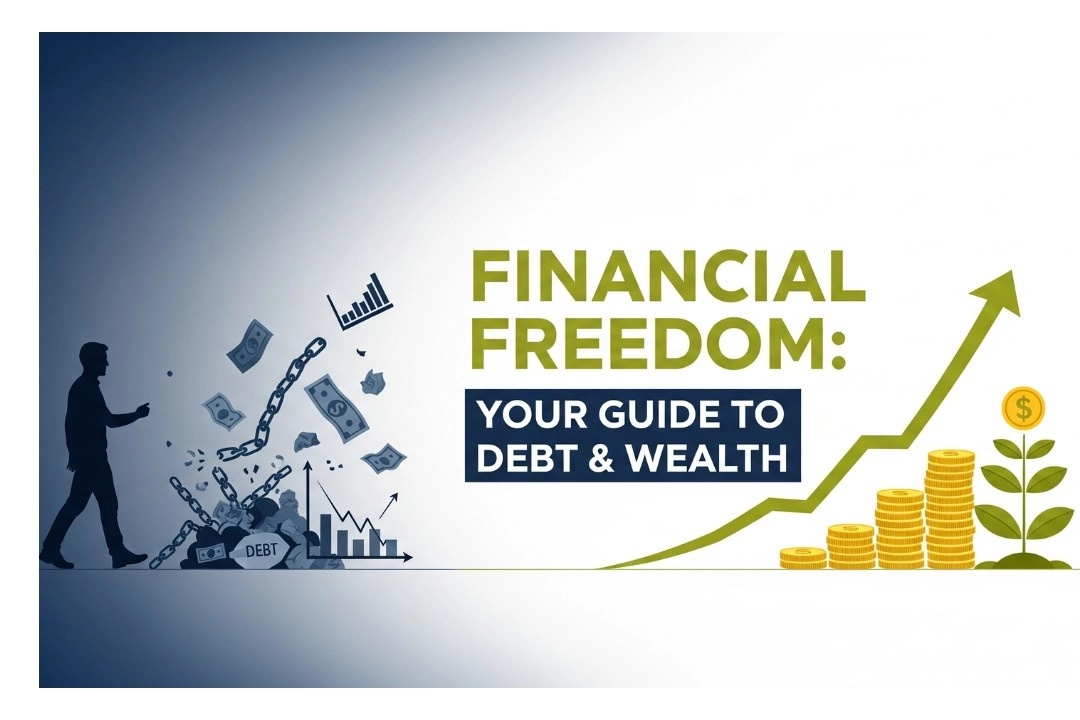Contents
From Debt to Dollars: A Practical Guide to Financial Freedom
For many Americans, the journey to financial stability feels like a constant uphill battle. The weight of credit card bills, student loans, and mortgages can be overwhelming, making the dream of building wealth seem distant and unattainable. However, achieving financial freedom is not reserved for a select few. It’s a goal that is within reach for anyone willing to create a strategic plan and stick to it. This guide will walk you through a practical, two-part approach: first, conquering your debt, and second, laying the groundwork for a prosperous future.
Part 1: Conquering the Debt Dilemma
Before you can build wealth, you must first secure your foundation by managing and eliminating debt. Debt is a financial anchor that holds you back, and understanding it is the first step to breaking free.
- Understanding Your Debt: The first step is to get a clear picture of your financial situation. List all your debts, including credit cards, personal loans, and student loans. Note the total amount owed, the interest rate for each, and the minimum monthly payment. This clarity will be your most powerful tool.
- Choosing a Repayment Strategy:
- The Debt Snowball Method: This approach, popularized by financial expert Dave Ramsey, involves paying off your smallest debt first while making minimum payments on the others. Once that debt is paid off, you “snowball” that payment into the next smallest debt. The psychological win of paying off a debt quickly can be a powerful motivator.
- The Debt Avalanche Method: This method focuses on paying off the debt with the highest interest rate first. This approach is mathematically more efficient and saves you the most money over time. It requires discipline, but the financial rewards are significant.
- Negotiating with Creditors: Don’t be afraid to call your credit card companies or lenders to negotiate a lower interest rate. Many companies are willing to work with you to keep you as a customer, and a simple phone call could save you thousands of dollars in interest.
Part 2: The Path to Building Wealth
With your debt under control, you can shift your focus from playing defense to playing offense. This is where you begin to make your money work for you.
- Creating a Realistic Budget: A budget is not about restricting your life; it’s about giving every dollar a purpose. Use the “50/30/20” rule as a starting point: 50% of your income for needs (housing, groceries, transportation), 30% for wants (entertainment, dining out), and 20% for savings and debt repayment. A clear budget empowers you to make intentional spending decisions.
- Building an Emergency Fund: Before you start investing, establish a robust emergency fund. This fund should contain enough money to cover 3-6 months of essential living expenses. It acts as a financial safety net, protecting you from unexpected events like job loss or medical emergencies and preventing you from going back into debt.
- Understanding Investment Options:
- 401(k) and Roth IRA: These are powerful retirement savings vehicles offered in the U.S. A 401(k) is often provided by employers and sometimes includes a matching contribution—free money! A Roth IRA offers tax-free withdrawals in retirement. Maximize these accounts as early as possible.
- Brokerage Accounts: For long-term goals beyond retirement, a brokerage account allows you to invest in stocks, bonds, and mutual funds. Start with low-cost index funds or ETFs to diversify your portfolio.
Part 3: Making Financial Freedom a Lifestyle
Financial success is a marathon, not a sprint. It’s about adopting habits that support your goals every single day.
- Identify Wants vs. Needs: Before making a purchase, ask yourself if it’s a want or a need. This simple question can help you avoid impulse buys and save a significant amount of money over time.
- Cook More, Eat Out Less: Dining out is one of the biggest budget-busters. Meal prepping and cooking at home can save you hundreds of dollars a month.
- Automate Your Finances: Set up automatic transfers from your checking account to your savings and investment accounts on payday. This removes the temptation to spend the money and ensures consistent progress toward your goals.
Conclusion: A Journey of Empowerment
The path from debt to dollars is a journey of empowerment. It requires discipline, patience, and a willingness to make smart choices. By first tackling your debt, then building a solid foundation of savings, and finally investing for the future, you are not just managing money—you are taking control of your life. Start today, with a single step, and watch your financial future transform from a source of stress into a beacon of hope and security.







